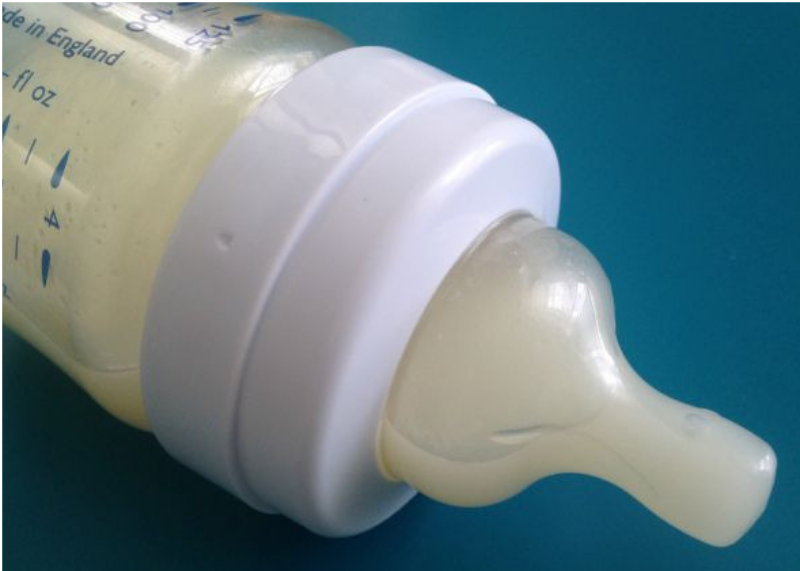Does your expressed breastmilk smell or taste soapy? Is baby not wanting to take bottles of expressed milk? Your first reaction might be that dish soap has contaminated your milk, but it’s more likely you have high levels of lipase in your breastmilk. Here’s what you need to know about lipase, and what you can do about it.
What’s lipase and why is it in my breastmilk?
Lipase is an enzyme which is normally found in human milk. Lipase acts as an emulsifier for milkfat, and breaks down milkfat so fat soluble nutrients are available to baby. Some women naturally produce more lipase than others. High concentration of lipase means milkfat breaks down faster, altering the taste and smell of the milk. Milk with high lipase is safe for baby to consume. Some babies don’t mind the taste, but others do. If your baby is refusing to take expressed breastmilk and you notice a soapy smell or taste, you may have high lipase in your milk. Keep reading to learn what options are available to you.
What can I do to fix high lipase?
If you think your breastmilk has high lipase and your baby isn’t too keen on the taste, here’s some things you can try to accommodate your picky eater…
Feed expressed breastmilk right away
Lipase breaks down milkfat which changes the taste and smell of the milk. This change takes time to occur, so if you offer your baby expressed milk right away (or the same day you pumped it), lipase may not be an issue.
Scalding your breastmilk to remove lipase
Scalding your milk will kill off the lipase ensuring it retains its flavor, composition, and smell. You can scald by putting milk in a saucepan and heating over medium heat, until it reaches a temperature of 82 C (180 F). You’ll see little bubbles around the edge of the milk in the pan. Once you reach this temperature, remove from heat, cool, and store as quickly as possible. Do not bring the milk to a rolling boil.
Tip: some mums use a bottle warmer to scald their milk. Make sure your bottle warmer doesn’t heat above 82 C / 180 F.
Try feeding baby high lipase milk again later
If your baby has an aversion to breastmilk with high lipase, it may only be temporary. Try again after a few weeks, and again after a few months.
What can I do with my freezer stash if baby refuses the breastmilk?
Already have a freezer stash full of high lipase milk and you’ve found your baby has an aversion to it? Don’t pour it down the drain as there are things you can try (in addition to trying to feed it to baby later on to see if the aversion has gone away).
Mix it up
If you have an older baby on solid food, you can try mixing it into some homemade purees such as mashed squash or potato.
Breastmilk is useful for more than just drinking
Did you know that breastmilk has many alternative uses to drinking? Milk baths are soothing for many common skin conditions including eczema, chicken pox, or dry skin. Simply draw a warm bath and add a bag or two of frozen or thawed breastmilk. You can also use it to make lotions or soaps, or just keep it in the freezer to help with future ailments like mosquito bites or scrapes.
Donate your breastmilk
Some babies don’t mind the taste of high lipase milk so you might consider donating your freezer stash to another baby in need.


